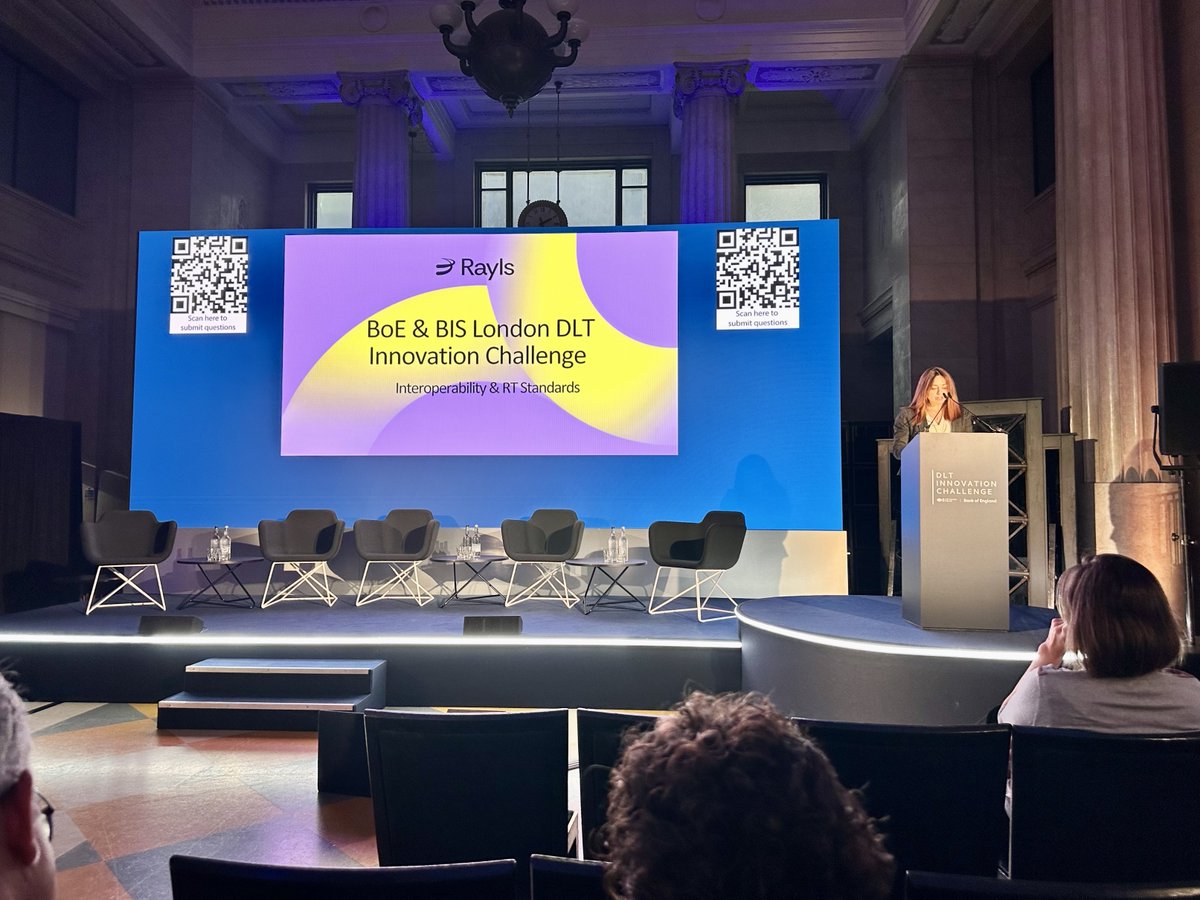老E加密日记———@RaylsLabs 技术深水区:Enygma的ZK魔法与混合链的硬核逻辑 第二篇
今天我们来扒层皮聊聊,兄弟们,我是老E,上次聊Rayls的整体野心后,X私信炸了——“技术细节呢?
Enygma到底怎么玩ZK和HE的?”行行行,你们这些技术控不喂饱不行。今天我泡了杯黑咖啡,刷了Rayls官网、白皮书和一堆eprint论文(包括他们那篇CBDC设计),再挖了挖X上的开发者吐槽和直播回放。
不是抄书,是真手感拆解:Rayls的混合架构、Enygma协议的加密内幕、共识机制的权衡啥的。
纯干货,带点我自己的小怀疑,读完你要是能自己搭个demo,那我这篇值了。走起。
先宏观说说Rayls的骨架吧。这不是个单纯的L2,而是“UniFi”生态的混合体:公链+私有子网,像个双面人,一面对DeFi敞开,一面给银行藏秘密。核心是EVM兼容,全链路用Reth执行层跑,确保开发者不费劲就能迁代码。公链是Ethereum L2(基于Arbitrum Orbit),所有账户强制KYC/AML,gas费锚USD,避免波动吓跑机构。
私有侧呢?每个银行跑自己的“Privacy Node”——单节点高速EVM账本,接企业数据库,TPS破万,零摩擦结算。
这些节点连进“Value Exchange Networks (VENs)”,本质是个许可子网,用Subnet Hub桥接,实现跨机构原子交换。想象下:巴西银行A转笔跨境款给JPMorgan B,3秒到账,细节全加密,但监管一键解锁。听起来科幻?他们已经在Drex CBDC试点里跑通了。
但Rayls的真核在Enygma协议上。这玩意儿不是简单遮掩,是“量子私有”框架,结合ZK-SNARKs和同态加密(HE),让交易默认隐私,却可选披露。
我瞅了他们的eprint论文(Rayls II: Fast, Private, and Compliant CBDCs),核心逻辑是把交易拆成两层ZK证明:一层藏身份/金额(用Baby Jubjub曲线椭圆运算,伪随机盲化),另一层验证合规(如1:1储备证明)。
简单说,发送方i想转给j金额v:先HE加密v(支持加法/乘法运算,不解密就能聚合),再ZK证明“总和匹配,无溢出”。结果?公链上看是乱码,授权审计员(比如央行)用私钥解密验证,量子攻击也啃不动——因为用了后量子签名和格基加密。
开发者怎么用?Enygma支持ERC-20/721/1155全家桶,集成SDK超顺:写个智能合约,调用encryptTransfer(to, amount),底层自动生成证明,gas费就多10-20%(测试网实测,AWS c5实例2秒出一笔匿名集大小6的证明)。
X上Rayls的直播里,CTO Jacob Mendel演示过:用Zokrates工具链,原子DvP(Delivery vs Payment)交换RWA,私钥不露,合同时机一到自动结算。牛逼在“Auditor View”——监管方有视图密钥,能peek加密数据,但不影响链上不可变性。
这戳中Vitalik的“Maximally Simple Privacy”路线图:隐私不是可选,是默认,但别扔掉审计。
共识机制这儿有点意思。公链用标准PoS,锚Ethereum安全;私有VENs起步RBFT(Redundant Byzantine Fault Tolerance),容忍1/3节点坏蛋,切换到Axyl(他们自家优化版)后,子秒块+即时终局。
PoA味儿重(Proof of Authority),机构节点投票治理费率啥的,灵活但中心化风险高。跨链呢?LayerZero集成120+链,流动性路由像1inch,但加了ZK桥,确保私密资产不泄露。
性能数据:测试网TPS 10k+,延迟<1s,远超Hyperledger的几百。
但论文里承认,规模到万亿级,ZK证明生成得优化,不然量子时代一锤子。挖深了,我也看到几道坎儿。不是黑,是真觉得团队得盯紧:
第一,ZK+HE的计算开销还卡脖子。 论文里实测2秒一证明,听着快,但高频交易(如FX对冲)堆起来,节点负载爆表。X开发者反馈:“集成Aave/Uniswap时,证明验证慢,debug像猜谜。” @RaylsLabs量子私有牛,但当前HE库(Paillier变种?)在多方计算时,噪声积累快,精度丢了就GG。
第二,原子性和互操作的边界模糊。 架构保证“全完成才终局”,好是好,但跨VENs的DvP万一桥抖?LayerZero牛,但低流动性链上,ZK同步卡壳,费率飙。社区帖子里,有人测巴西Drex场景,偶尔“证明失效”重试,体验拉胯。
第三,开源节奏慢,生态黏性弱。 承诺2025年底开源Enygma和Privacy Node,行,但现在开发者还靠闭测SDK,门槛高。相比Zcash的快速迭代,Rayls太“机构范儿”,黑客松少,信仰粉难养。话说回来,这些不是死穴,是成长痛。
Old E Encrypted Diary --- @RaylsLabs Technical Deep Water: Enygma's ZK Magic and the Hardcore Logic of the Hybrid Chain Part 2
Today we are going to talk about layers of skin, brothers and sisters, I am old E, the last time we talked about the overall ambition of Rayls, X privately sent a letter to explode -“What about the technical details?
How exactly does Enygma play ZK and HE?”Come on, you techies can't feed us. Today, I made a cup of black coffee, scanned the Rayls website, white paper, and a bunch of eprint papers (including their CBDC design), and dug up the developer complaints and live replays on X.
It's not a copy, it's a real dismantling: the hybrid architecture of Rayls, the cryptographic insider of the Enygma protocol, the tradeoff of the consensus mechanism.
Pure dry goods, with a little doubt of my own, after reading if you can make a demo yourself, then I value this. Get out of here.
Let's start with the Rayls skeleton. This is not a simple L2, but a mixture of "UniFi" ecology: public chain + private subnet, like a two-faced person, open to DeFi and hide secrets for banks. The core is EVM compatible, and the whole link is run with the Reth execution layer to ensure that developers can move the code without effort. The public chain is Ethereum L2 (based on Arbitrum Orbit), where all accounts force KYC / AML, gas anchor USD, and avoid volatility to scare away institutions. What about the private side? Each bank runs its own "Privacy Node" - a single-node high-speed EVM ledger, connected to the enterprise digital library, TPS breaking million, zero friction settlement. These nodes are connected“Value Exchange Networks (VENs)”, is essentially a permissive subnet, bridging with a Subnet Hub to achieve cross-institutional atomic exchange. Imagine: Bank of Brazil A transfers cross-border money to JPMorgan B, and it arrives in 3 seconds, all the details are encrypted, but the supervision unlocks it with a click. Does that sound science fiction? They've run through the Drex CBDC pilot. But rayls' eukaryotes are on the enygma protocol. This is not a simple cover-up, but a "quantum private" framework that combines ZK-SNARKs and homomorphic encryption (HE) to make transactions private by default, but optional disclosure. I looked at their eprint paper (Rayls II: Fast, Private, and Compliant CBDCs), The core logic is to split the transaction into two layers of ZK proof: one layer hides identity / amount (using Baby Jubjub curve ellipse operation, pseudo-random blinding), and the other layer verifies compliance (such as 1: 1 reserve proof). Simply put, the sender i wants to transfer the amount of j v: first HE encrypts v (supports addition / multiplication operations, can be aggregated without decryption), and then ZK proves that "sum matches, no overflow." The result? Public chains look messy, empower auditors (such as central banks) to decrypt verification with private keys, and quantum attacks can't afford to - because of the use of post-quantum signatures and G-key cryptography. How do developers use it? Enygma supports the ERC-20 / 721 / 1155 family bucket, and the integration SDK is super easy: write a smart contract, call encryptTransfer (to, amount), and the underlying proof is automatically generated, and the gas charge is 10-20% higher (test network measurement, AWS c5 instance produces an anonymous set size 6 proof in 2 seconds). In the live broadcast of Rayls on X, CTO Jacob Mendel demonstrated: using the Zokrates toolchain, atomic DvP (Delivery vs Payment) to exchange RWA, the private key is not revealed, and the contract is automatically settled when the time comes. The key is the "Auditor View" - the supervisor has the view key, which can peek into the data, but does not affect the on-chain immutability. This pokes into Vitalik's "Maximally Simple Privacy" roadmap: Privacy is not optional, it's the default, but don't throw out audit. The consensus mechanism is kind of interesting here. Public chain with standard PoS, anchor Ethereum security; Private VENs start with RBFT (Redundant Byzantine Fault Tolerance), tolerate 1 / 3 of the node bad guys, switch to Axyl (their own optimized version), sub-second blocks + instant endgame. PoA tastes heavy (Proof of Authority), institutional nodes vote governance rates, flexible but centralized risk is high. What about cross-chains? LayerZero integrates 120 + chains, and flows like 1inch, but adds a ZK bridge to ensure that private assets are not leaked.Performance data: Test network TPS 10k +, latency < 1s, far more than hundreds of Hyperledger.But the paper admits that the scale to the trillion level, ZK proof generation is optimized, or the quantum era will be a hammer. The dig deepened, and I saw a few valleys as well. Not black. I really think the team needs to be on the lookout:
First, the computational overhead of ZK+HE is still a bottleneck. In actual tests, it takes around 2 seconds to generate a proof. While this may seem fast, when dealing with high-frequency trading (such as FX hedging), the node load can become overwhelming. Developers have reported that "integrating Aave/Uniswap led to slow proof verification and debugging that felt like trying to solve a puzzle." @RaylsLabs, the quantum private key solution, is quite impressive, but currently, the HE library (a variant of Paillier?), when used for multi-party computation, accumulates noise rapidly, leading to a loss of precision and rendering the solution useless.
Second, the boundaries of atomicity and interoperability are blurred. The architecture guarantees that "completion is final," which is good, but what if the DvP across VENs experiences a hiccup? LayerZero is impressive, but on a low-liquidity chain, ZK synchronization can get stuck, and the fees skyrocket. In community posts, someone tested the Drex scenario in Brazil, occasionally experiencing "proof failure" and having to retry, resulting in a subpar experience.
Third, the pace of open-sourcing is slow, and the ecosystem's stickiness is weak. It was promised that Enygma and Privacy Node would be open-sourced by the end of 2025. However, developers are still relying on the closed beta SDK, which creates a high barrier to entry. Compared to Zcash's rapid iteration, Rayls has a more "institutional" feel, with fewer hackathons and harder to cultivate a dedicated fan base. To be fair, these are not fatal flaws but rather pains of growth.

来自推特
免责声明: 以上内容仅为作者观点, 不代表CoinNX的任何立场, 不构成与CoinNX相关的任何投资建议。


